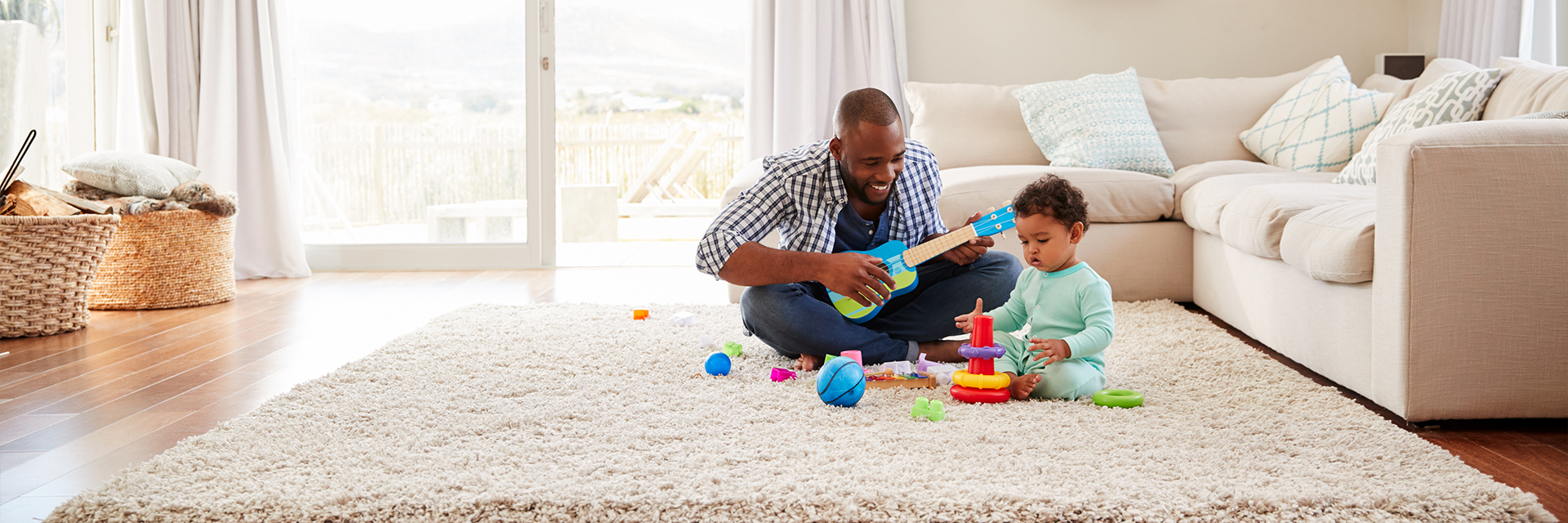Your baby’s most important job is to be curious and active. In doing so, however, your little one can get into trouble quickly. Take measures to prevent accidents in the home. Baby-proof each room in stages, before your child reaches the next stage of mobility—sitting and reaching, crawling, standing and walking.
Print out the childproofing info sheet and checklist below and take it with you as you check each area of your home.
Childproofing Strategy Sheet & Checklist
- Start by getting down on your hands and knees and looking around your home from your baby’s view.
- As you go from room to room, try to think of your child’s next move
- Look for hidden dangers, such as small, easy-to-access choking or poisoning hazards (hard candies, coins and coin-sized lithium batteries, etc.).
- Move all cleaning products and medicines (including vitamins) out of your baby’s reach.
- Once your baby is reaching and grabbing, crawling or walking, you’ll need to take extra care to ensure his safety, including installing:
- Baby gates at the top and bottom of stairs and in the doorways to the kitchen and bathrooms
- Safety covers on all electrical outlets, and possibly on stove controls
- Safety locks on all windows and cabinets
- Window guards
- Now, prepare for these important baby, young child and family safety precautions:
- Wrap any dangling cords in a cord retainer so your child cannot pull an appliance or lamp down on himself. Keep babies and children away from electrical outlets and use plastic outlet protectors.
- Keep floors free of toys and clothing to prevent tripping. Older children should store toys with small parts out of the reach of siblings who might choke on them.
- Keep plants, large cleaning buckets and supplies, medicines, hot drinks, small toys, coins, batteries, latex balloons and candies out of the reach of babies and young children.
- Keep all children on riding toys away from stairs, porches, cars and in-ground pools.
- Lock all unopened windows. Open windows from the top and keep furniture that babies or children could climb on away from windows.
- Don’t leave a baby unattended on a sofa, bed, chair or changing table.
- Never leave babies or young children in the bath without supervision. Take them with you if you must leave, even for an instant.
- Install smoke detectors on each level of your home and outside each sleeping area. Periodically test the batteries and change them yearly.
- Develop a fire escape plan and make sure all family members know what to do in case of fire. Practice your plan.
- Use nightlights in children’s rooms, hallways and the bathroom.
- Always close outer doors securely behind you and teach your older children to do the same, so that a small child cannot get outside on his own.
- Keep cribs, highchairs, playpens and babies away from curtain cords, which pose a strangulation hazard.
- Pad the sharp corners of furniture or remove such pieces.
- Secure tippable furniture wherever possible. Use wall attachments for tippable bureaus, TV stands, bookshelves, etc.
- Keep candy, gum, uninflated or popped balloons, marbles, disc batteries and other choking hazards out of a baby's or young child's reach.
- Store emergency numbers (for police, fire, ambulance and poison control) in your cellphone, and either next to your landline (if you have one) or in an easily accessible place in your home.
See also ...
• Childproofing overview from National Safety Council
• 12 child safety devices for the home
This message is not intended to provide individual medical advice. Always seek the advice of a physician or qualified healthcare provider for any questions you have about your health or medical condition, your breastfeeding issues and your infant's health. Never disregard, avoid or delay contacting a doctor or other qualified professional because of something you have read in our emails, webpages or other electronic communications.
Powered by UbiCare

